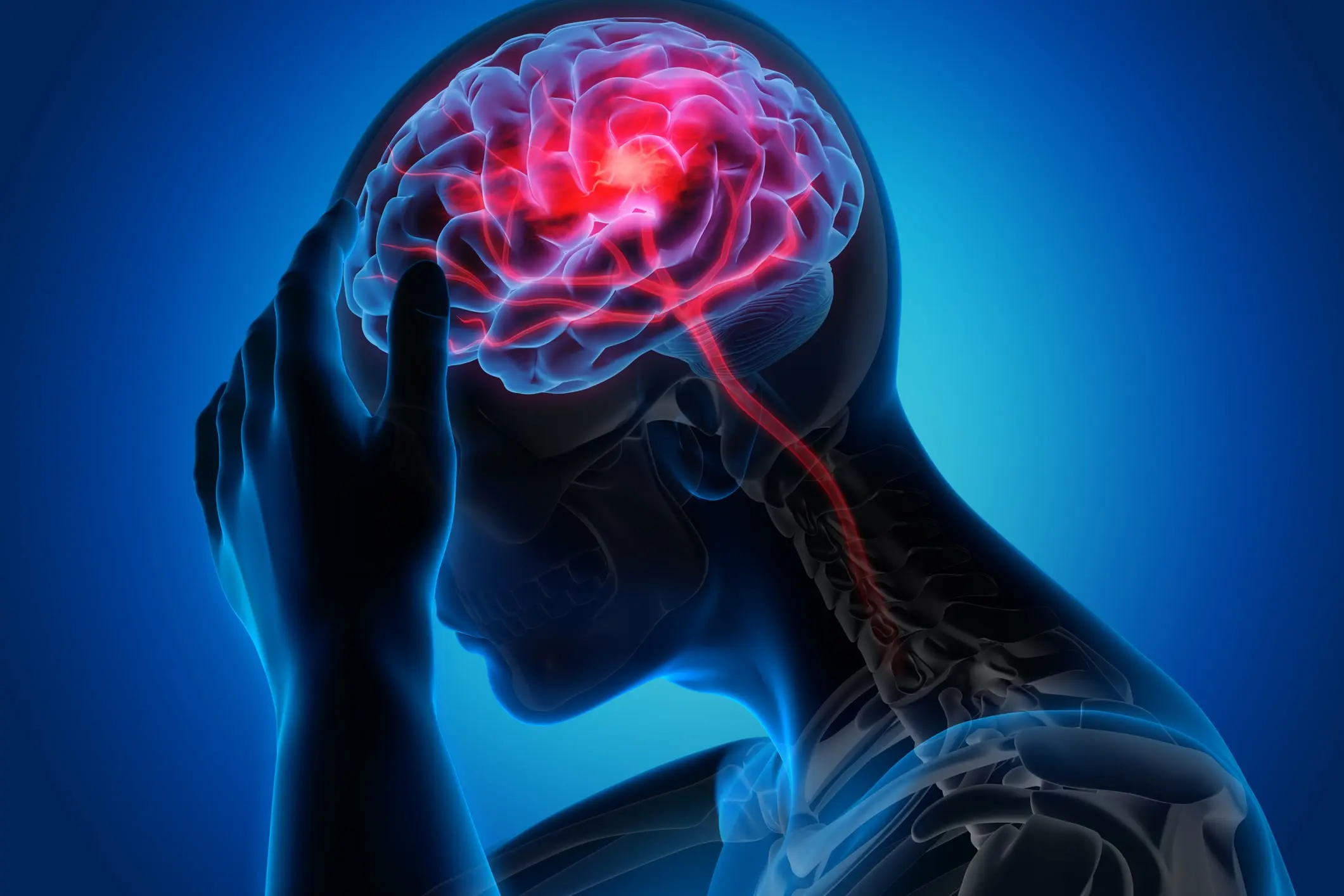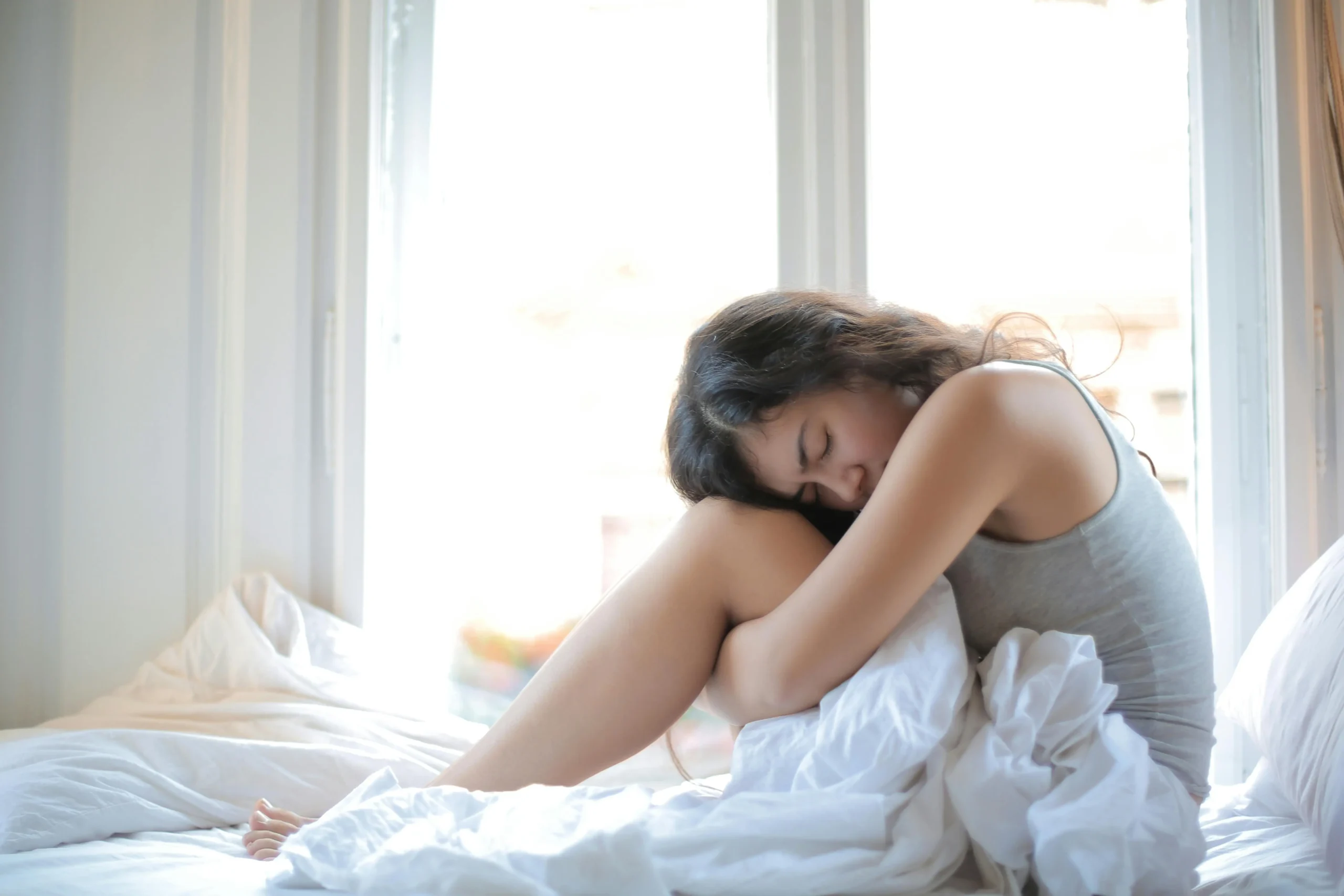Did you know that according to the National Institute on Drug Abuse (NIDA), a staggering 85% of incarcerated individuals in the United States have a substance use disorder or were imprisoned for a drug-related crime?
Shockingly, according to a recent report, only 11% of inmates with addiction and substance abuse issues receive treatment during their time in prison.
The connection between addiction and incarceration is a complex and intertwined cycle affecting individuals and society.
This article explores the intricate relationship between substance abuse and imprisonment, shedding light on the factors perpetuating this vicious cycle.
We will delve into the emotional toll on incarcerated individuals and the broader societal consequences, emphasizing the pressing need for transformative change in our addiction and criminal justice approach.
Understanding Substance Abuse and Addiction
Substance abuse is the harmful or excessive use of drugs or alcohol, negatively impacting an individual’s physical, mental, or social well-being.
It involves the misuse of substances, often in a manner that deviates from approved medical or social norms.
On the other hand, addiction is a chronic and compulsive disorder characterized by an individual’s inability to control their consumption of a particular substance despite knowing its adverse effects.
It goes beyond mere abuse and involves physical and psychological dependence, leading to an intense craving for the substance, tolerance, withdrawal symptoms upon cessation, and a strong focus on obtaining and using the substance despite the resulting personal, social, and professional problems.
Commonly Abused Substances and Statistics
| Substance | How it is Used | Statistics |
|---|---|---|
| Alcohol | Consumed orally as beverages like beer, wine, and spirits. | According to the National Survey on Drug Use and Health (NSDUH), approximately 85.6% of people aged 18 or older reported drinking alcohol at some point in their lifetime. |
| Tobacco/Nicotine | Smoked in cigarettes, cigars, or pipes, or used in smokeless tobacco products like chewing tobacco or snuff. |
The Centers for Disease Control and Prevention (CDC) reports that approximately 14% of adults in the United States are current cigarette smokers. |
| Marijuana | Typically smoked in joints or pipes, but can also be consumed as edibles or vaporized. | According to the NSDUH, around 43.5 million people aged 12 or older used marijuana in the past year, making it the most commonly used illicit drug in the United States. |
| Prescription Opioids | Orally ingested as painkillers or crushed, snorted/injected for a more intense effect. | The National Institute on Drug Abuse (NIDA) reports that an estimated 10.1 million people aged 12 or older misused prescription opioids in 2019. |
| Cocaine | Usually snorted as a powder, but it can also be dissolved and injected. | According to the NSDUH, around 2.2 million people aged 12 or older used cocaine in the past year. |
| Methamphetamine | Often smoked, snorted, injected, or taken orally as a pill. | The NSDUH reported approximately 1.9 million people aged 12 or older used methamphetamine in the past year. |
Alarming Statistics
According to the National Institute on Drug Abuse (NIDA), 85% of the prison population has an active substance use disorder or were incarcerated for a drug or drug use crime.1
Data collected through 2007 and 2008-09 shows that two-thirds (63%) of sentenced jail inmates met the criteria for drug dependence or abuse.
From 2001 to 2018, the number of people who have died of drug or alcohol intoxication in state prisons increased by more than 600%.
Up to 65% of the U.S. prison population is estimated to have an active substance use disorder.
Only 11% of inmates with substance abuse and addiction disorders receive any treatment during their incarceration.
Nearly 300,000 people in the United States are held in state and federal prisons for drug-law violations.
More than 80% of people in jail or prison report using illicit substances in their lifetime.
Drug incarceration statistics show that over 700,000 people are still arrested for marijuana offenses annually and almost 500,000 for other drug offenses.
The Vicious Cycle Unveiled
The link between addiction and incarceration is a complex and multifaceted relationship that impacts individuals from all walks of life.2
When someone becomes entangled in the grip of addiction, their actions may lead to legal consequences, often resulting in imprisonment.
Substance abuse becomes a coping mechanism for many, offering temporary relief from underlying emotional or psychological struggles.
However, as addiction progresses, the individual’s ability to control their behavior diminishes, leading to risky actions that may violate the law.
Moreover, addiction can impair judgment and impulse control, increasing the likelihood of engaging in criminal activities to sustain their habit.
When these actions result in arrests and convictions, individuals with substance abuse issues often find themselves caught in a cycle where incarceration does little to address the root causes of their addiction.
Without proper access to rehabilitation and treatment programs, the cycle perpetuates, making it challenging for them to break free from this interlinked web of addiction and imprisonment.
Consequently, addressing this issue requires a comprehensive approach that combines support, understanding, and rehabilitative measures to give individuals a chance at recovery and successful reintegration into society.
Factors Contributing to the Cycle
Factors contributing to addiction among incarcerated individuals are numerous and complex.
Firstly, many inmates already struggle with pre-existing substance abuse issues before entering the criminal justice system.
Substance abuse might have played a significant role in their involvement in criminal activities, leading to their arrest and subsequent incarceration.
Secondly, within the prison environment, access to treatment and rehabilitation for substance abuse is often limited or inadequate.
This lack of support can hinder an individual’s efforts to overcome their addiction and address the underlying issues driving their behavior.
Additionally, socioeconomic and environmental factors are crucial in shaping addiction patterns among incarcerated individuals.
Poverty, unemployment, lack of education, and exposure to crime-ridden neighborhoods contribute to a higher risk of substance abuse and subsequent entanglement with the criminal justice system.
To break the cycle of addiction and incarceration, addressing these factors necessitates comprehensive interventions that encompass rehabilitation, social support, and opportunities for positive change both during and after incarceration.
Factors Contributing to Addiction Among Incarcerated Individuals
| Factors | Descriptions |
|---|---|
| 1. Pre-existing substance abuse issues | Many incarcerated individuals enter the criminal justice system with pre-existing substance abuse problems. These issues might have been an underlying cause of their involvement in criminal activities, leading to their arrest and subsequent imprisonment. Substance abuse can exacerbate criminal behavior, impair decision-making, and contribute to a cycle of addiction and criminality. |
| 2. Lack of access to treatment and rehabilitation | Within the prison environment, access to proper treatment and rehabilitation for substance abuse is often limited or inadequate. Incarcerated individuals may not receive the necessary support and resources to address their addiction effectively. Without appropriate interventions, the root causes of their substance abuse may remain unaddressed, making it challenging for them to break free from the cycle of addiction during their incarceration and beyond. |
| 3. Socioeconomic and environmental factors | Socioeconomic and environmental factors also play a significant role in contributing to addiction among incarcerated individuals. Many who end up in prison come from disadvantaged backgrounds, facing poverty, unemployment, and limited access to education and opportunities. Exposure to crime-ridden neighborhoods can increase the risk of substance abuse to cope with stress and trauma. These factors can create a cycle of disadvantage, leading individuals into substance abuse and eventual involvement in criminal activities, perpetuating the link between addiction and incarceration. |
The Legal System’s Approach Toward Drug-Related Offenses
The legal system’s approach toward drug-related offenses is a topic of ongoing debate and scrutiny.3
On the one hand, it emphasizes punitive measures, including arrests, prosecution, and imprisonment, to deter drug-related criminal activity.
Mandatory minimum sentences and harsh penalties have been implemented to combat drug abuse and distribution.
However, critics argue that this punitive approach may exacerbate the cycle of addiction and incarceration, as it often fails to address the underlying issues driving substance abuse.
Increasingly, there is a growing recognition of the importance of adopting a more rehabilitative and compassionate approach.
Diversion programs, drug courts, and treatment alternatives are emerging as promising avenues that seek to address addiction as a public health issue rather than merely a criminal one.
Striking a balance between punishment and rehabilitation remains challenging, highlighting the need for ongoing efforts to reshape the legal system’s approach and prioritize effective solutions that promote recovery and reduce recidivism rates.
The Impact on Individuals
The impact of addiction and incarceration on individuals is profound and far-reaching.
Those grappling with substance abuse often face emotional and psychological tolls, experiencing mental health struggles and trauma.4
Relationships with family and friends may be strained, leading to isolation and a sense of disconnection.
On the other hand, when individuals find themselves incarcerated due to drug-related offenses, the experience can be physically and emotionally challenging.
Being separated from loved ones and society can lead to feelings of despair and hopelessness.
Moreover, the stigma associated with being a formerly incarcerated individual may hinder reintegration into the community post-release.
Addressing the impact on individuals requires a compassionate approach prioritizing mental health support, access to rehabilitation and reentry programs, and efforts to reduce social stigma, empowering them to rebuild their lives after facing the dual burdens of addiction and imprisonment.
The Societal Consequences
The societal consequences of the cycle of addiction and incarceration are far-reaching and multifaceted.
At a broader level, the prevalence of substance abuse and drug-related offenses contributes to the burden of overcrowded prisons, straining resources and perpetuating a costly cycle of incarceration.
From an individual perspective, those caught in the grip of addiction may experience strained relationships, financial hardships, and diminished productivity, impacting their lives and those of their families and communities.
Furthermore, the criminalization of drug offenses often leads to stigmatization and marginalization, hindering individuals’ opportunities for reintegration into society post-release.
The societal consequences also extend to increased healthcare costs, lost workforce potential, and heightened recidivism rates.
Addressing these consequences requires a comprehensive approach that focuses on prevention, access to treatment and rehabilitation, and a shift towards a more compassionate and rehabilitative criminal justice system, fostering a society that supports individuals in their journey toward recovery and reintegration.
Breaking the Cycle: A Multifaceted Approach
To break the cycle of addiction and incarceration, we need to take a multi-faceted approach that deals with the root causes of substance abuse and its link to criminal behavior.
Firstly, we need to focus on prevention efforts that target at-risk individuals before they become involved in the criminal justice system.5
This can be achieved by providing early intervention, education, and community-based support.
Secondly, we need to offer alternatives to incarceration for non-violent drug offenders.
Programs such as diversion programs and drug courts can provide access to treatment and rehabilitation.
Thirdly, it is crucial to ensure access to evidence-based treatment options, mental health support, and comprehensive reentry programs post-release.
This will help support individuals in their journey toward recovery and successful community reintegration.
In addition, addressing socioeconomic disparities and providing equal access to education, employment, and housing opportunities can help break the cycle of addiction and criminality.
We can create a more compassionate, effective, and sustainable response to addiction and incarceration challenges by fostering collaboration between law enforcement, healthcare professionals, and community organizations.
The Need for Comprehensive Addiction Treatment
The need for comprehensive addiction treatment is paramount in addressing the complex and interrelated issues of substance abuse and its impact on individuals and society.
Addiction is a chronic and multifaceted disorder that requires a holistic approach, combining medical, psychological, and social interventions.
Treating addiction solely as a criminal issue perpetuates the cycle of incarceration without addressing the underlying causes of substance abuse.
Comprehensive addiction treatment offers evidence-based therapies, counseling, and support to help individuals understand and cope with the root triggers of their addiction.
By focusing on prevention, early intervention, and long-term support, comprehensive treatment seeks to break the cycle of addiction and reduce the societal burdens of crime, recidivism, and healthcare costs.
Empowering individuals with the tools for recovery and reintegration can lead to positive transformations in both their lives and the communities they are a part of, fostering a healthier and more compassionate society for all.
Diversion and Alternatives to Incarceration
Implementing diversion and alternative programs is crucial to establish a more forward-thinking and restorative criminal justice system.
These programs acknowledge that some individuals, especially those with non-violent drug-related crimes or underlying substance abuse problems, may benefit more from support and treatment instead of being imprisoned.
Diversion programs and drug courts provide opportunities for qualified individuals to participate in rehab programs, receive addiction treatment, and address the underlying causes of their criminal behavior.
By diverting these individuals from traditional incarceration, these alternatives offer hope for recovery, reduce the likelihood of reoffending, and ease the burden on overcrowded prisons.
Prioritizing rehabilitation instead of punishment creates a more compassionate and effective response to crime, supporting individuals on their journey toward healing and successful reintegration into society as productive and law-abiding citizens.
Education and Prevention Strategies
Effective education and prevention tactics are vital in breaking the addiction cycle and decreasing drug-related crimes.
These strategies aim to provide individuals with knowledge about the risks and repercussions of substance abuse, emphasizing early intervention and comprehensive education.
Prevention programs in schools, community outreach efforts, and public awareness campaigns all aid in raising awareness about the dangers of drugs while promoting healthy coping mechanisms and decision-making skills.
Additionally, providing evidence-based prevention programs to at-risk populations equips them with the necessary tools to resist peer pressure and make informed choices.
By investing in education and prevention, societies can take proactive measures to reduce the demand for drugs and curb addiction’s social and economic consequences, creating healthier and more resilient communities in the long run.
Reentry and Aftercare Support
Successfully transitioning back into society after incarceration can be challenging for individuals who have completed their sentences.
These individuals often face various obstacles, such as stigmatization, limited access to housing and employment opportunities, and the risk of relapse into substance abuse.
Reentry programs provide crucial support, including job training, counseling, and social services, to help individuals reintegrate into society.
Aftercare support is also essential, as it offers continued guidance and assistance in maintaining sobriety, accessing community resources, and building positive connections.
By prioritizing reentry and aftercare support, society can empower formerly incarcerated individuals to break free from the cycle of addiction and criminality, increasing their chances of living fulfilling and law-abiding lives.
This approach also reduces recidivism rates and promotes public safety.
Breaking the Stigma
Creating a more compassionate and inclusive society requires eliminating the negative perception of addiction and incarceration.
The stigma attached to substance abuse and incarceration creates a sense of shame and isolation, preventing individuals from seeking help and support.
It also hinders formerly incarcerated individuals from reintegrating into their communities, often resulting in repeated offenses.
By challenging misconceptions and negative attitudes, breaking the stigma allows for open discussions about addiction, mental health, and the difficulties those in the criminal justice system face.
It promotes a shift in perspective, viewing addiction as a treatable medical condition instead of a moral failure, encouraging access to treatment and rehabilitation rather than punitive measures.
By embracing empathy and understanding, society can play a vital role in providing a second chance to those who have struggled with addiction and incarceration, allowing them to rebuild their lives and become valuable contributors to their communities.

Despite the challenges of addiction and incarceration, we can still find hope in our ability to create positive change.
By implementing a compassionate and rehabilitative approach, we can break the chains that keep individuals trapped in addiction and imprisonment.
Our priority should be education, prevention, and comprehensive treatment, providing second chances and support to those on the path to recovery and reintegration.
We must work together to break down stigmas, increase understanding, and transform our criminal justice system.
This way, we can create a brighter future where empathy and hope prevail over the shadows of addiction and construct a society that values the potential for every individual’s transformation and renewal.
If you or someone you care about is battling addiction, we ask you to contact us at Cornerstone Healing Center in Scottsdale, AZ. Our belief in achieving recovery for all is unwavering, and we strive for lasting results.
We also provide DUI-related services if you are facing incarceration for an alcohol-related incident.








